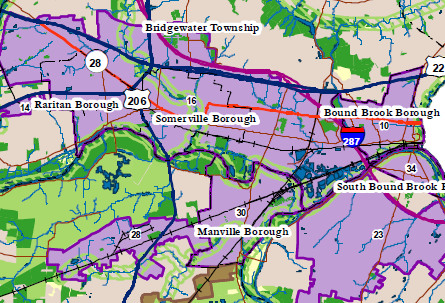New Jersey Future Blog
Planning Trumps Size When It Comes To Traffic
May 31st, 2001 by Tim Evans
Traffic Delays
- Size isn’t everything. In large cities where growth was planned around transportation investments like trains and subways, traffic delays are a fraction of those experienced by smaller cities where growth has largely followed the automobile.
- Case in point: The 16.4 million people in the New York/Northeastern NJ area are delayed by traffic an average of 34 hours per person per year. Though it’s number two to New York in population, Los Angeles-area travelers lose 56 hours a year to traffic, the nation’s worst delays. And though sprawling Atlanta has a mere 3 million people in comparison, its traffic delays of 53 hours per person per year are 50 percent worse than in the New York area.
- Philly-area travelers (including those in southwestern New Jersey) likewise fare better than those in comparably sized metro areas where growth has followed the highways. With 4.6 million people losing 26 hours a year to traffic, Philly handily beats the San Francisco-Oakland and Detroit metro areas, each with 4 million people losing 42 hours and 41 hours respectively to traffic delays.
(Data from the Texas Transportation Institute Study released May 2001)
Communities that plan their growth in partnership with transportation investment reap a host of benefits, from fewer traffic delays as shown by the data above, to higher property values, as experienced by communities along the recently completed Midtown Direct Rail line.New Jerseyans may love their cars, but they hate sitting in traffic. This may be why when offered the choice, New Jersey voters favor increased spending on public transit (57 percent) over building new roads (39 percent) in an NJF poll taken last summer.
But spending on transportation improvements is meaningless if it’s out of sync with local decisions about zoning and land use. Today, any community can appeal to the State to build or widen a road, fix an intersection or improve its rail service, without changing the local zoning that encourages additional traffic problems. Similarly, the State can launch a major road or rail project within a community paid for by taxpayers statewide, with no assurance that local zoning won’t spur – or discourage – future growth that undermines the investment.
New Jersey needs a “contractual” agreement between state transportation agencies and local communities before undertaking new transportation construction or improvement, to ensure local land-use decisions are compatible with state transportation spending. Otherwise, New Jersey could follow the road to today’s Atlanta. (See “20 Ways to Move NJ Toward a More Prosperous, Just and Healthy Future,” on-line at www.njfuture.org)
Facts Contact:
B. Tim Evans, NJF Research Director
timevans njfuture
njfuture org (timevans
org (timevans njfuture
njfuture org)
org)
















